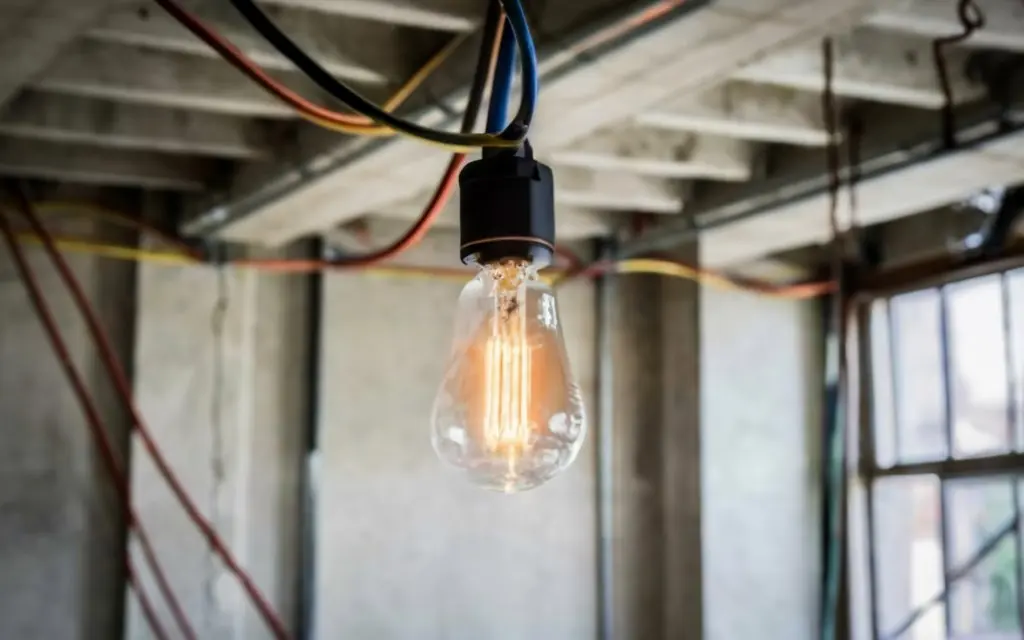In industrial settings, efficient lighting control is essential to reduce energy costs and maintain productivity. The Square D 8903LX40 lighting contactor is a popular choice for managing large-scale lighting systems in commercial and industrial environments. Whether you’re a seasoned electrician or a first-time installer, this guide will help you get the most out of this powerful piece of equipment.
What is the Square D 8903LX40?
The Square D 8903LX40 is a lighting contactor designed to control lighting circuits remotely. It provides an efficient way to manage lighting in large industrial spaces. This device can handle multiple lighting loads, making it ideal for areas that require extensive lighting control, such as warehouses, factories, or commercial spaces.
Key Features:
- High Load Capacity: Supports a significant number of lighting circuits, providing flexibility for various lighting setups.
- Durable Construction: Built to withstand tough industrial environments.
- Remote Control: Allows easy on/off control of lighting from a remote location.
- Energy Efficiency: Helps save on energy costs by controlling lighting usage effectively.
Tools and Materials Needed for Installation
Before starting the installation, gather the necessary tools and materials. Having everything ready will make the process smoother and faster.
Tools:
- Screwdrivers (Flathead and Phillips)
- Wire strippers
- Electrical pliers
- Multimeter (for testing voltage)
- Drill (if needed for mounting)
- Voltage tester
Materials:
- Square D 8903LX40 lighting contactor
- Electrical wiring (appropriate gauge based on load)
- Mounting screws or brackets
- Wire connectors
- Electrical tape
- Circuit breaker (if not already in place)
Step-by-Step Guide to Installing the Square D 8903LX40
Now that you have your tools and materials ready, follow these steps to install the Square D 8903LX40 properly.
1. Ensure Safety First
Before starting any electrical work, safety should be your top priority. Turn off the power to the lighting circuits you’re working on at the main electrical panel. Use a voltage tester to verify that no power is running to the area where you’ll be installing the contactor.
2. Choose a Mounting Location
Select an appropriate location for the Square D 8903LX40 contactor. It should be easily accessible for maintenance, away from moisture, and close to the lighting circuits you plan to control. If you’re mounting the contactor on a wall, make sure it’s securely fastened with the appropriate screws or brackets.
3. Install the Circuit Breaker (if necessary)
If your setup doesn’t already include a dedicated circuit breaker for the lighting circuits, install one now. The circuit breaker will protect your lighting system from overloads. Ensure it’s rated for the electrical load of the circuits the contactor will control.
4. Wire the Power Supply
Next, wire the power supply to the contactor. Locate the power input terminals on the Square D 8903LX40, which are typically marked L1, L2, and L3 (for three-phase systems). Use wire strippers to remove about ¾ inch of insulation from the power supply wires, then connect them to the corresponding terminals on the contactor. Tighten the terminal screws securely to ensure a solid connection.
5. Connect the Load Wires
Now, connect the lighting load wires to the contactor’s output terminals, which are usually labeled T1, T2, and T3. These terminals send power to the lighting circuits when the contactor is activated. Strip the wires and connect them as you did with the power supply wires, making sure the connections are secure and tight.
6. Ground the Contactor
Proper grounding is essential for safety and to prevent electrical faults. Locate the grounding terminal on the Square D 8903LX40 and connect a grounding wire from the contactor to a reliable grounding point, such as the electrical panel’s ground bus.
7. Wire the Control Circuit
The control circuit is what activates the contactor to turn the lights on and off. Depending on your setup, this may involve connecting a manual switch, a timer, or an automated control system. Follow the manufacturer’s wiring diagram to connect the control circuit to the contactor’s coil terminals, usually marked A1 and A2.
8. Test the Wiring Connections
Before powering up the system, double-check all wiring connections. Use a multimeter to test for continuity and ensure that everything is connected properly. Verify that the contactor is correctly wired to both the power and control circuits.
9. Restore Power and Test the Contactor
Once you’re confident that the wiring is correct, turn the power back on at the main panel. Test the control circuit by flipping the switch or activating the control system. The Square D 8903LX40 should engage and send power to the lighting circuits, turning the lights on. If everything works as expected, the installation is complete.
10. Secure and Label Wires
Finally, secure all wires neatly inside the contactor enclosure, using wire ties if necessary. Label the wires to indicate which circuits they control for future reference.
Using the Square D 8903LX40
Now that your Square D 8903LX40 is installed, let’s discuss how to use it effectively to manage your industrial lighting system.
Manual Control
If your setup includes a manual switch, controlling the lights is straightforward. Simply flip the switch to activate the contactor, which will turn the lights on or off depending on its position. This method is common in industrial settings where the lights need to be controlled from a central location, such as a control room.
Automated Control
For more advanced systems, you can integrate the Square D 8903LX40 with automation systems such as timers, sensors, or building management systems. These systems can automatically control the lights based on preset conditions, such as time of day or occupancy. Automated control is ideal for reducing energy consumption by ensuring that lights are only on when needed.
Remote Control Options
In modern industrial setups, remote control is often used to manage lighting systems from a distance. The Square D 8903LX40 can be connected to a remote control panel, allowing facility managers to control the lights without physically being in the space. This is particularly useful in large warehouses or manufacturing plants where manual control may be impractical.
Maintenance and Troubleshooting
To ensure your Square D 8903LX40 continues to function properly, regular maintenance is essential. Here are a few tips to keep your lighting contactor in good working condition:
1. Regular Inspections
Periodically inspect the contactor for signs of wear, such as burnt or damaged wiring. Also, check the terminal screws to ensure they remain tight. Loose connections can lead to overheating and potential equipment failure.
2. Clean the Contactor
Over time, dust and debris can accumulate inside the contactor enclosure. Use compressed air to clean out the interior, ensuring that no foreign objects interfere with the electrical components.
3. Test the Contactor
Every few months, test the contactor to ensure it engages and disengages properly. If the contactor doesn’t activate or seems slow to respons, it may need to be replace.
4. Troubleshooting Common Issues
If the Square D 8903LX40 isn’t working as expected, here are some common issues and solutions:
- No Response: Check the control circuit to ensure it’s properly connected. Test the switch, timer, or automation system to verify they’re sending the correct signal.
- Lights Flickering: This could be a sign of loose wiring or a faulty contactor. Inspect the wiring and tighten any loose connections.
- Overheating: If the contactor feels hot to the touch, it may be overloaded. Ensure that the connect light circuits are within the contactor’s rate capacity.
Energy-Saving Tips
Using the Square D 8903LX40 can help reduce energy consumption in your facility. Here are some additional strategies to maximize energy savings:
1. Use Timers
Install timers to automatically turn off lights during non-operational hours. This ensures that lights aren’t left on when they’re not needed, reducing energy waste.
2. Occupancy Sensors
Consider using occupancy sensors that activate the lights only when someone is in the area. These sensors are especially useful in spaces that aren’t constantly occupied, such as storage rooms or hallways.
3. Optimize Lighting Zones
Divide your facility into lighting zones and control each zone independently. This allows you to turn off lights in areas that aren’t in use, further reducing energy costs.
Conclusion
The Square D 8903LX40 is a reliable and efficient lighting contactor that simplifies the management of industrial lighting systems. By following the installation steps outlined in this guide, you can ensure a safe and efficient setup. Once installed, using the contactor is easy, whether you’re opting for manual, automated, or remote control.
Regular maintenance and testing will keep your Square D 8903LX40 running smoothly, ensuring that your industrial lighting system operates efficiently for years to come. With the right installation and usage, you’ll enjoy the benefits of enhanced energy savings and better control over your facility’s lighting.

